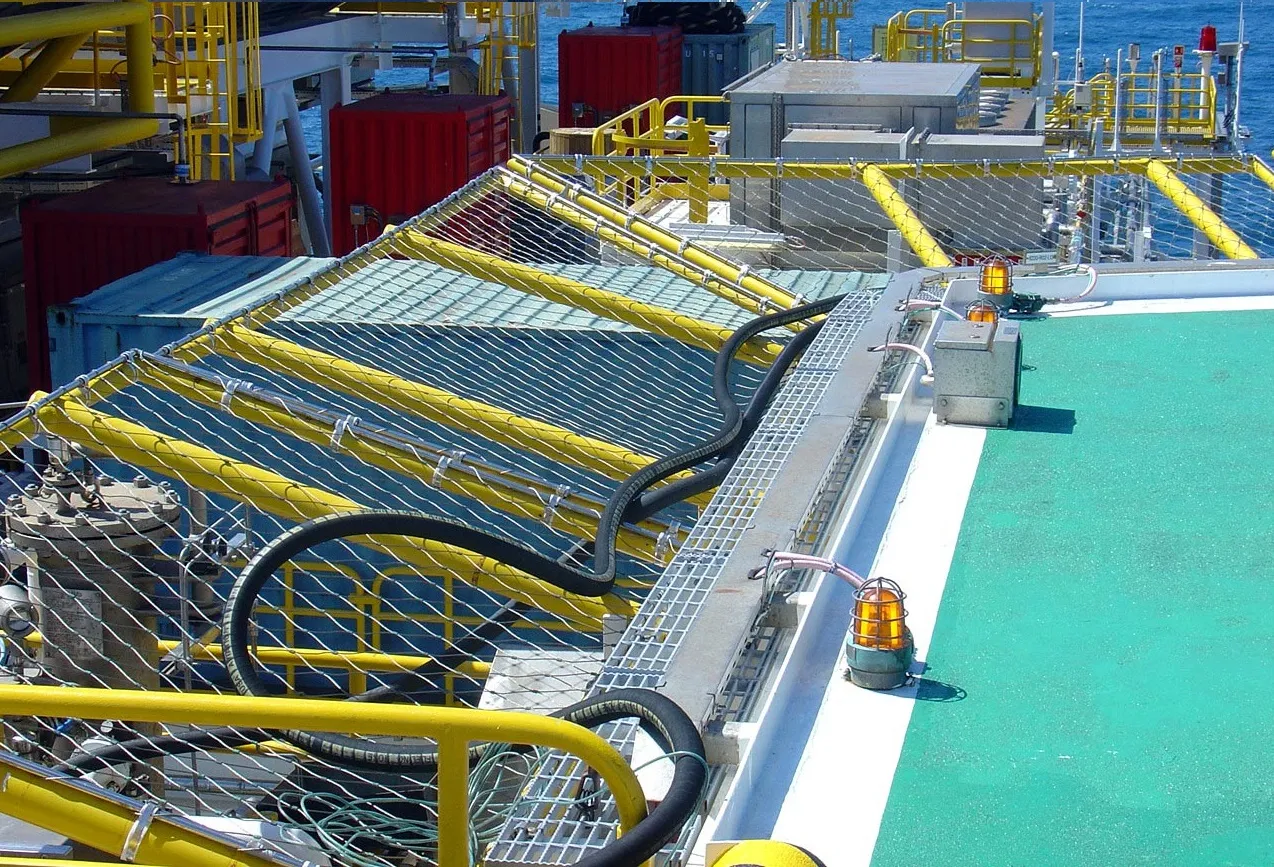- Industrial zone, South of Anping Town, Hengshui, Hebei, China.
- sales@hfpetromesh.com
- +86-18931809706
 Afrikaans
Afrikaans  Albanian
Albanian  Amharic
Amharic  Arabic
Arabic  Armenian
Armenian  Azerbaijani
Azerbaijani  Basque
Basque  Belarusian
Belarusian  Bengali
Bengali  Bosnian
Bosnian  Bulgarian
Bulgarian  Catalan
Catalan  Cebuano
Cebuano  Corsican
Corsican  Croatian
Croatian  Czech
Czech  Danish
Danish  Dutch
Dutch  English
English  Esperanto
Esperanto  Estonian
Estonian  Finnish
Finnish  French
French  Frisian
Frisian  Galician
Galician  Georgian
Georgian  German
German  Greek
Greek  Gujarati
Gujarati  Haitian Creole
Haitian Creole  hausa
hausa  hawaiian
hawaiian  Hebrew
Hebrew  Hindi
Hindi  Miao
Miao  Hungarian
Hungarian  Icelandic
Icelandic  igbo
igbo  Indonesian
Indonesian  irish
irish  Italian
Italian  Japanese
Japanese  Javanese
Javanese  Kannada
Kannada  kazakh
kazakh  Khmer
Khmer  Rwandese
Rwandese  Korean
Korean  Kurdish
Kurdish  Kyrgyz
Kyrgyz  Lao
Lao  Latin
Latin  Latvian
Latvian  Lithuanian
Lithuanian  Luxembourgish
Luxembourgish  Macedonian
Macedonian  Malgashi
Malgashi  Malay
Malay  Malayalam
Malayalam  Maltese
Maltese  Maori
Maori  Marathi
Marathi  Mongolian
Mongolian  Myanmar
Myanmar  Nepali
Nepali  Norwegian
Norwegian  Norwegian
Norwegian  Occitan
Occitan  Pashto
Pashto  Persian
Persian  Polish
Polish  Portuguese
Portuguese  Punjabi
Punjabi  Romanian
Romanian  Russian
Russian  Samoan
Samoan  Scottish Gaelic
Scottish Gaelic  Serbian
Serbian  Sesotho
Sesotho  Shona
Shona  Sindhi
Sindhi  Sinhala
Sinhala  Slovak
Slovak  Slovenian
Slovenian  Somali
Somali  Spanish
Spanish  Sundanese
Sundanese  Swahili
Swahili  Swedish
Swedish  Tagalog
Tagalog  Tajik
Tajik  Tamil
Tamil  Tatar
Tatar  Telugu
Telugu  Thai
Thai  Turkish
Turkish  Turkmen
Turkmen  Ukrainian
Ukrainian  Urdu
Urdu  Uighur
Uighur  Uzbek
Uzbek  Vietnamese
Vietnamese  Welsh
Welsh  Bantu
Bantu  Yiddish
Yiddish  Yoruba
Yoruba  Zulu
Zulu
- Afrikaans
- Albanian
- Amharic
- Arabic
- Armenian
- Azerbaijani
- Basque
- Belarusian
- Bengali
- Bosnian
- Bulgarian
- Catalan
- Cebuano
- Corsican
- Croatian
- Czech
- Danish
- Dutch
- English
- Esperanto
- Estonian
- Finnish
- French
- Frisian
- Galician
- Georgian
- German
- Greek
- Gujarati
- Haitian Creole
- hausa
- hawaiian
- Hebrew
- Hindi
- Miao
- Hungarian
- Icelandic
- igbo
- Indonesian
- irish
- Italian
- Japanese
- Javanese
- Kannada
- kazakh
- Khmer
- Rwandese
- Korean
- Kurdish
- Kyrgyz
- Lao
- Latin
- Latvian
- Lithuanian
- Luxembourgish
- Macedonian
- Malgashi
- Malay
- Malayalam
- Maltese
- Maori
- Marathi
- Mongolian
- Myanmar
- Nepali
- Norwegian
- Norwegian
- Occitan
- Pashto
- Persian
- Polish
- Portuguese
- Punjabi
- Romanian
- Russian
- Samoan
- Scottish Gaelic
- Serbian
- Sesotho
- Shona
- Sindhi
- Sinhala
- Slovak
- Slovenian
- Somali
- Spanish
- Sundanese
- Swahili
- Swedish
- Tagalog
- Tajik
- Tamil
- Tatar
- Telugu
- Thai
- Turkish
- Turkmen
- Ukrainian
- Urdu
- Uighur
- Uzbek
- Vietnamese
- Welsh
- Bantu
- Yiddish
- Yoruba
- Zulu
11w4 grating
Understanding 11W4% Grating A Comprehensive Overview
The 11W4% grating is a specialized optical element widely used in various applications, particularly in spectroscopy, telecommunications, and laser systems. Gratings can be defined as optical components that disperse light into its component wavelengths. The term 11W4% refers to specific parameters of the grating, namely its groove density and efficiency.
Understanding 11W4% Grating A Comprehensive Overview
One significant aspect of the 11W4% grating is its high efficiency in specific wavelength ranges. The 4% refers to the maximum efficiency of the grating, which indicates how effectively it can direct light of a certain wavelength. This efficiency varies with the angle of incidence and wavelength, making it crucial for researchers and engineers to select the optimal operating conditions for their specific applications.
11w4 grating

In spectroscopy, for instance, the choice of grating can significantly influence the resolution and sensitivity of the measurement. Higher resolution is achieved through grating with greater groove density, while the efficiency directly affects how much of the incident light is utilized effectively. In cases where light intensity is critical, such as in fluorescence spectroscopy, the choice of an appropriate grating becomes paramount.
Telecommunications also benefit from the use of the 11W4% grating. The continuous advancement in fiber optics relies heavily on efficient wavelength division multiplexing (WDM) technologies. Gratings help separate different wavelength channels, enabling high-speed data transmission over optical fibers. With an increasing demand for bandwidth in communication networks, the role of efficient optical elements like the 11W4% grating cannot be overstated.
When considering the use of 11W4% gratings in laser systems, several factors come into play. The grating's characteristics influence the performance of laser cavities, including the gain and stability of the laser output. Incorporating an appropriately designed grating can enhance the laser's output quality and broaden its application range, from medical devices to industrial cutting tools.
In summary, the 11W4% grating represents a key technological element in modern optics, with applications spanning spectroscopy, telecommunications, and laser engineering. Understanding the specific characteristics of this grating, including its groove density and efficiency, allows scientists and engineers to harness its properties effectively. The continued development of grating technology will undoubtedly lead to advancements in various fields, enhancing our ability to explore and manipulate light for innovative applications. As research progresses, the importance of optimizing grating performance remains a crucial endeavor in pushing the boundaries of optical science.
-
Welded Steel Grating: The Strong Foundation for Industrial SafetyNewsJul.16,2025
-
Strong and Safe: Swaged Grating SolutionsNewsJul.16,2025
-
Smart Choice For Industrial Safety MeshNewsJul.16,2025
-
Press-Locked Steel Grating: The Ultimate in Strength and SafetyNewsJul.16,2025
-
Keep Worksites Safer With Practical NettingNewsJul.16,2025
-
Helideck Safety Nets: Your First Line of DefenseNewsJul.16,2025